In my memory it was early fall, the leaves in Sioux City just beginning to turn. I must have been twelve or thirteen. Dad and I were tossing the football in the yard and talking about my grandfather, Les Davis. He’d died in 1966, when I was nine. Thankfully I’d had the chance to fish with him the summer before his death on a trip to Lake of the Woods in Ontario—my first-ever Canadian fishing trip—and to this day I’ve never seen his equal with a bait-casting outfit. His casting stroke was effortless, and he possessed an uncanny ability to precisely feather the spool of the reel to prevent a backlash—what used to be called having an “educated thumb.”
He was a renowned wingshot, too. I never got to hunt with Gramps but Dad remembered seeing him, sometime during the South Dakota “glory days” of the 1940s, kill five rooster pheasants with five consecutive shots from his 12-gauge Remington pump while standing in the same spot. Many years later that old Remington became my turkey gun, and while it was a beast to lug up the hills and down the hollows of our camp in Wisconsin’s Driftless, when it went Boom! (or, as happened once or twice, Boom! Boom!) a longbeard died. Period.
I knew that Gramps had been a legendary figure on the local sports scene, also, first as a coach at East High School and Morningside College, later as a radio and television personality. I even had a fuzzy memory—in black-and-white, of course—of seeing him doing the sports on TV. He had a signature sign-off that went something like “Remember: Don’t just see a sport—be one.”
What I didn’t know, until that day, was that as a member of the Morningside College football team in the late-1910s, Gramps had played against Notre Dame. When Dad alluded to it I thought he was joking. Notre Dame was a national power; Morningside (meaning the Morningside I knew circa 1970) was a perennial also-ran in the Division II North Central Conference. Even to a kid my age, the idea of these schools clashing on the gridiron was laughable.
“It’s true,” Dad said, tossing me the pigskin. “Notre Dame actually came here twice. They won both games, but it was close. Morningside played ‘em tough.”
More Like This
I passed the ball back and Dad continued. “One of the games was played on Thanksgiving Day in a snowstorm. Uncle Rollo (Rollo Bergeson, my great-uncle) swears that the Morningside players came out wearing cotton husking gloves—and that by the end of the game the Notre Dame players were wearing the gloves.”
My family connection to the story made me want to know more, and over the years I was able to fill in a few of the details about the Morningside-Notre Dame “rivalry.” The games were played in 1917 and 1919, both in Sioux City; the scores were 13-0 and 14-6, respectively, in favor of the visitors. In 1917 Knute Rockne, arguably the most famous college football coach of all time, was still a Notre Dame assistant; by 1919 he’d ascended to the head position.
Morningside was a Methodist school, and the press played up the Protestants vs. Catholics angle at every opportunity. A headline in the Morningside Collegian Reporter described the Notre Dame team as “Mighty Catholic Warriors.”
Perhaps the most fascinating footnote-to-history, though, is this: During the 1917 contest, the great Notre Dame halfback George Gipp—he of “Win one for the Gipper” fame—suffered a broken leg when the Morningside tacklers hurled him out-of-bounds into a post. While his teammates boarded the train to return to South Bend, Gipp stayed behind and convalesced for several days in a Sioux City hospital.
Eventually, with the help of the Morningside College athletics office, I got in touch with a surviving member of that Morningside team, Gen. Horace F. Wulff. At the time Wulff lived in the Chicago area, and the letter I received from him, dated 4 March 1985, was my Rosetta Stone to that long-ago contest—and to the game of football as it was played in that rough-and-tumble era of leather helmets and moleskin breeches.
“I played with the 1917 team,” Wulff recounted. “Your grandfather Les Davis, how I admired him, was a member of the 1919 squad. Memories tend to fade somewhat but I shall do my best to build a bridge over the years ...”
Explaining that Notre Dame was fresh off a hard-fought 7-0 victory over Army, Wulff recalled “The Irish were puffed up about it. Newspapers the country over played it up big. This thrilled us; we were anxious to get at these advertised mighty men …
“Tom, we whipped ‘em to a frazzle, we had all the statistics—everything, but they beat us by running for two touchdowns on two intercepted forward passes. Our QB, Marcus Dubel, was told not to pass, because our ground game was going good. But he did and we got burned …We should have taken ND to the cleaners.”
The record book bears this out: Morningside outgained Notre Dame from scrimmage 238 yards to 145, while making 15 first downs to a measly six—six!—for the Irish.
“You may wonder how ND would come out to the sticks and play sandlot football,” Wulff added. “Well, our coach Jason ‘Saundy’ Saunderson and Rockne were buddies. Saundy got on the phone long distance to ask Rock to bring his outfit to Sioux City, and Rock said they couldn’t possibly come for any less than $3,500. Saundy said ‘All right, Rock, we’ll pay $3,500 on your arrival.’ I was writing college news for the Sioux City Journal and heard the entire conversation.”
Another fact about the 1917 game that Wulff brought to light is that it took place in Mizzou Park, a long-forgotten venue (it was razed in 1927) that stood near the Missouri River waterfront in downtown Sioux City. With a record crowd expected, a temporary fence had been put up to keep the throngs in check:
“I played left tackle, Vic Menefee was next to me at end. He was a butcher, a bandit. I took more hurts from him during the season that I did from our adversaries in moleskins. It was Vic and I who stopped Gipp as the Irish called a right end sweep. Vic hit Gipp low and I hit him high. He spun like a top, hit the fence and sustained a fractured leg. They loaded him in an ambulance and headed for St. Vincent’s Hospital.”
Wulff recalled that he and Gipp “got very well acquainted” during Gipp’s hospital stay, also that he “couldn’t believe that a little school of 600 students could field such a team.” Wulff recalled, too, that at one point during the game he heard Notre Dame’s All-American guard “Hunk” Anderson say to a teammate, “Holy Christ, Jack, this is the roughest bunch of goddamn preachers I ever saw!”
With Rockne in his second season as head coach, the Irish returned to Sioux City to play the Maroons, as they were called then, on November 27, 1919—Thanksgiving Day. The game, the season finale for both squads, was played on Bass Field in the heart of the Morningside campus. The kickoff was set for 2:30 in the afternoon.
“Playing in a falling snow with the mercury near the 10 above zero mark,” reported the Sioux City Journal, “the Notre Dame University football team yesterday narrowly escaped defeat at the hands of the Morningside College eleven…More than 4,000 enthusiastic gridiron fans braved the frigid temperatures and watched the battle with bated breath. The capacity of the newly erected stands was taxed to the utmost.”
In point of fact the game wasn’t as close as the final score suggests. While Morningside drew first blood with an early touchdown, the Irish, led by a healthy Gipp, dominated play. They outgained their hosts by a margin of nearly three yards to one, racking up 23 first downs to just seven for the Maroons. The win gave Notre Dame an unblemished 9-0 record for the season; Morningside finished 5-2.
As for my grandfather’s performance, here’s what the Journal had to say:
“Davis, who had been counted upon by Maroon supporters to handle a large part of the carrying role, was somewhat of a disappointment. Although given frequent opportunities to carry the ball, he failed to make any noticeable advances and netted but fifteen yards throughout the game.”
Oh, well, at least he gave it the old college try. You have to remember, too, that in those days of “one platoon” football the starters went both ways, playing offense and defense. It’s pretty cool to think that the same hands that held mine when I was a little boy had once wrestled down George Gipp, one of the greatest and most-mythologized players of all time.
I just hope that The Gipper didn’t end up wearing Grandpa’s gloves.




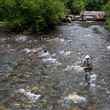









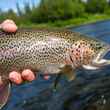




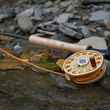
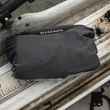



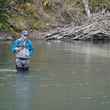






Comments